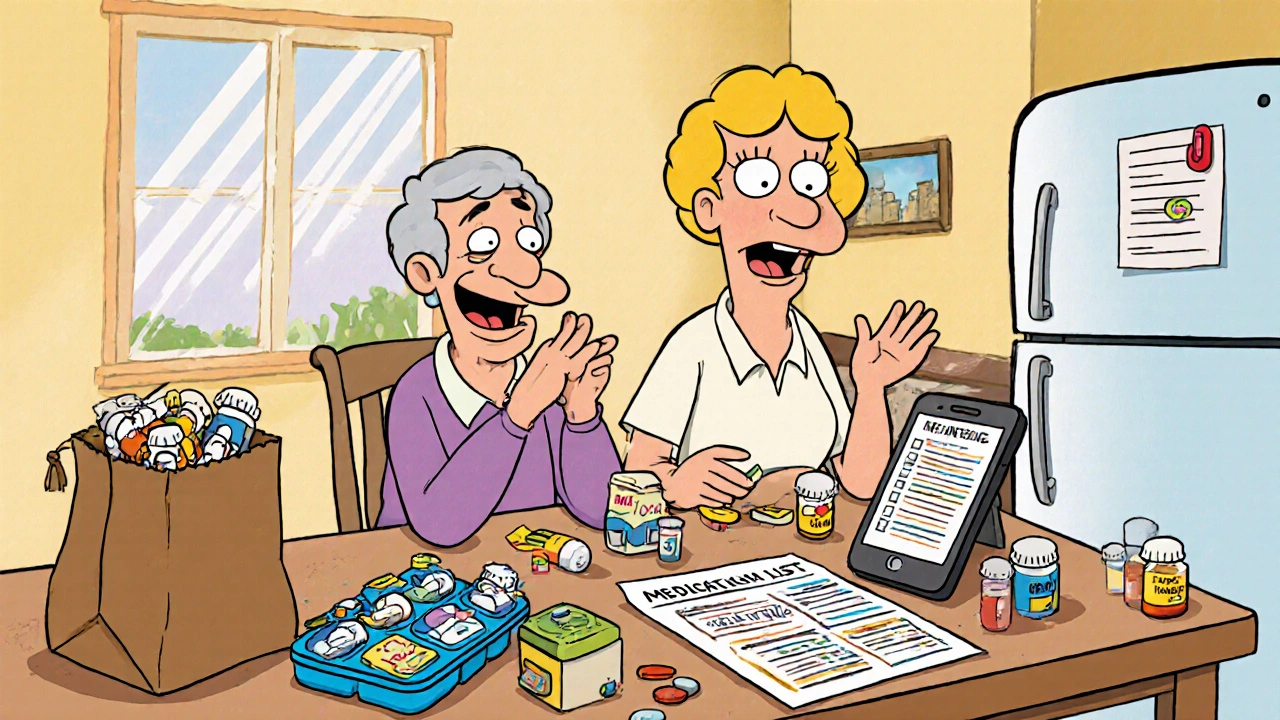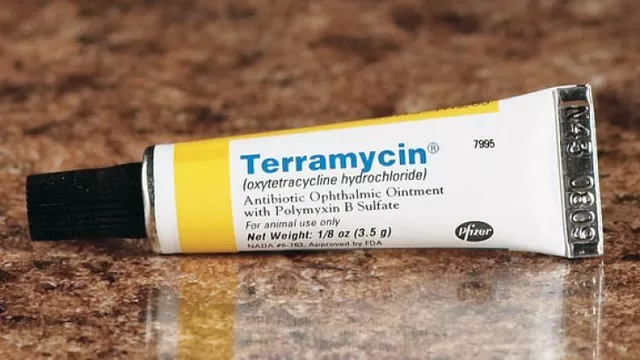Why a Medication List Matters for Seniors
Most seniors take at least five medications every week. Some take ten, fifteen, or more. That’s not just a lot of pills-it’s a ticking time bomb if no one knows what’s being taken, when, or why. A simple mistake-giving a double dose, missing a pill, or mixing two drugs that shouldn’t be together-can land someone in the hospital. In fact, medication errors cause around 7,000 deaths a year in the U.S. alone. And it’s not just about accidents. Many older adults are on medications that are no longer needed, but no one ever stopped them. That’s why having a clear, up-to-date medication list isn’t just helpful-it’s life-saving.
What to Include in the List
A good medication list doesn’t just say ‘blood pressure pill.’ It tells you exactly what it is, how to take it, and why. Here’s what you need to write down for every medication:
- Brand and generic name (e.g., Lisinopril 10mg, brand name Zestril)
- Dosage (e.g., 5mg, 1 tablet)
- Frequency (e.g., once daily, twice a day, every 6 hours)
- Purpose (e.g., ‘for high blood pressure,’ ‘for joint pain’)
- Special instructions (e.g., ‘take with food,’ ‘do not crush,’ ‘avoid alcohol’)
- Start date (when was it first prescribed?)
- Prescribing doctor (name and clinic)
- Pharmacy name and phone number
- Side effects to watch for (e.g., dizziness, nausea, swelling)
- Allergies (even if you think you know them-write them down)
- Stop date (for time-limited prescriptions like antibiotics)
Don’t forget supplements. Many people take fish oil, vitamin D, or herbal remedies like ginkgo. These aren’t ‘just vitamins.’ They can interact with prescription drugs. Treat them like real medicine. If your loved one takes 12 pills a day, that list should have 12 entries-not 8.
Choose the Right Format: Paper, Digital, or Both
Some caregivers swear by paper. Others say apps are the only way to stay organized. The truth? You need both.
Paper lists are simple, reliable, and work even when the power’s out or the phone dies. Keep a printed copy in a binder, taped to the fridge, and in a wallet or purse. In an emergency, first responders look for this. A 2023 survey found 63% of caregivers still use paper as their main tool. But paper has limits. If a doctor changes a dose on Tuesday, the list on the fridge is already wrong by Wednesday.
Digital tools like Medisafe, MyMeds, or even a shared Google Sheet fix that problem. They can send reminders, track refills, and sync with pharmacies. CVS and Walgreens now offer free automatic updates-when a prescription is refilled, the app updates the list. That cuts update time by 75%. But here’s the catch: 62% of caregivers over 65 struggle with apps. If your parent can’t use a smartphone, don’t force it. Use the app for yourself.
The best system? Keep a printed master list (laminated, if possible) for emergencies. Use a digital app as your daily working copy. Update the paper list every time you update the app. That way, you’re covered whether the power’s on or off.

How to Build the List-Step by Step
Don’t try to do this in one sitting. Break it into steps.
- Collect everything. Go through every drawer, cabinet, and nightstand. Pull out every pill bottle, patch, inhaler, and liquid. Don’t skip the ones that look empty-sometimes they still have pills left.
- Write down each one. Use the 12-point checklist above. Read the label. If it’s unclear, call the pharmacy. Don’t guess.
- Sort by time of day. Group pills by when they’re taken: morning, noon, evening, bedtime. This makes it easier to set reminders.
- Create two copies. One for home, one for your phone or tablet. Save the digital version where you can access it from any device.
- Set a weekly update time. Every Sunday evening, spend 15 minutes checking for changes. Did the doctor add a new pill? Did the pharmacy switch the dose? Update both lists immediately.
- Share with everyone. Give a copy to the primary doctor, pharmacist, and any other provider. Leave one with a trusted neighbor or relative.
It takes 2-3 hours to set up the first list. After that, it’s just 15 minutes a week. That’s less time than scrolling through social media. And it could prevent a hospital visit.
Dealing with Common Problems
Even with the best list, things go wrong. Here’s how to handle the most common issues.
- ‘As needed’ meds (PRN): These are the tricky ones-painkillers, sleep aids, anti-anxiety pills. Create a separate PRN log. Write down when it was taken and why. ‘Took 2 Tylenol at 3 p.m. for knee pain.’ This helps spot overuse.
- Multiple doctors: If your loved one sees five different specialists, each prescribing their own meds, things get messy. Pick one doctor (usually the primary care provider) to be the ‘medication coordinator.’ They’re the one who reviews everything every 3 months.
- Medication changes after hospital stays: Hospitals often change meds. But discharge papers don’t always reach the family. Always bring the current medication list to the hospital. When they discharge your loved one, ask: ‘What changed? What did you stop? What’s new?’ Write it down. Then update your list before you leave the hospital.
- Over-the-counter meds and supplements: These are the silent killers. A senior might take ibuprofen daily for arthritis, not realizing it’s dangerous with blood thinners. Add every OTC and supplement to the list. Treat them like prescriptions.
Pro Tips from Real Caregivers
People who’ve been through this share what actually works.
- Use photos. One caregiver took pictures of each pill and printed them on a laminated chart. Now she just points to the photo instead of reading tiny labels. It’s helped prevent 3 near-misses in 6 months.
- Color-code. Use colored stickers: red for blood pressure, blue for heart, green for pain. It’s faster than reading names.
- The brown bag method. Every time you go to the doctor, bring all medications in a brown paper bag. No lists. No excuses. Just the real bottles. Doctors love this. It cuts confusion by 89%.
- Ask the pharmacist. Pharmacists aren’t just there to fill prescriptions. They’re medication experts. Every 3 months, take the list to the pharmacy. Ask: ‘Are any of these drugs no longer needed? Are any of them risky together?’ Most pharmacies do this for free.

What to Do When Things Go Wrong
Even with a perfect list, mistakes happen. If you think your loved one had a bad reaction-dizziness, confusion, rash, falling-don’t wait. Call the doctor or pharmacist immediately. Bring the medication list with you. Don’t try to fix it yourself.
If a new medication is prescribed, ask: ‘Is this absolutely necessary?’ ‘What happens if we don’t take it?’ ‘Are there cheaper or safer options?’ Many seniors are on meds they don’t need anymore. A 2022 review found that 27% of seniors were taking at least one inappropriate medication. A good pharmacist can help stop those.
Keep It Alive
A medication list is useless if it’s outdated. That’s why updates aren’t optional-they’re part of the job. Set a recurring calendar alert: every Sunday at 7 p.m. Open the list. Check for new prescriptions. Check for refills. Check for side effects you’ve noticed. If nothing changed, write ‘no changes’ and sign it. That’s it.
Medication management isn’t about being perfect. It’s about being consistent. You don’t need to be a nurse. You just need to be the person who shows up every week and checks the list. That’s the difference between safety and disaster.
What’s Coming Next
The system is getting better. In 2025, Medicare Advantage plans will require medication reviews for anyone on eight or more drugs. Pharmacies will automatically sync refill data to your digital list. By 2026, voice-activated systems might let you say, ‘Hey Google, what did Mom take this morning?’ and get an answer.
But none of that matters if you don’t have a clear, current list right now. The tools will help. But the real power is in the list you create today.




